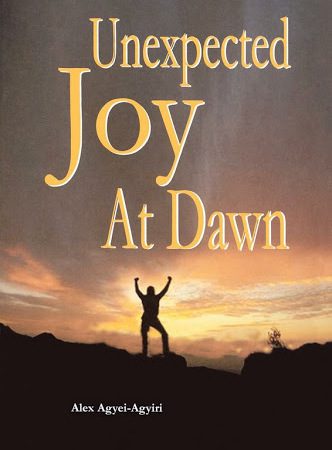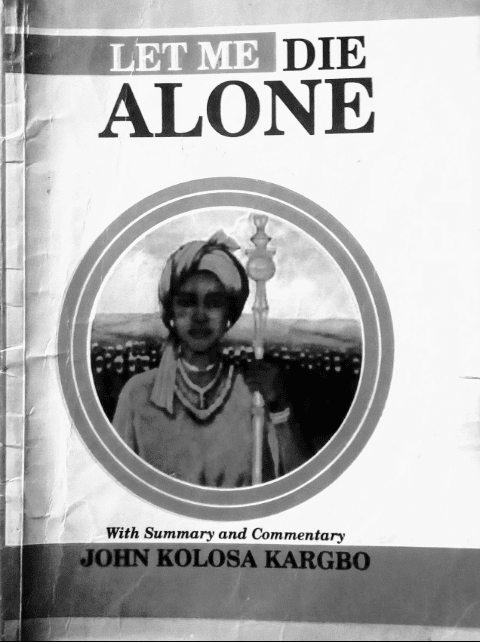Raider of the Treasure Trove by Lade Worsonu is a poem of five stanzas with a total of twenty-three lines. The first stanza has four lines; the second stanza, the third stanza and the fourth stanza have five lines respectively; while the fifth stanza has four lines.
It is a didactic poem about the metrics of life. It is quintessentially informing and instructing on the things one must imbibe or eschew in order to live a peaceful and comfortable life – what the poet tags “heaven-on-earth”.
Raider of the Treasure Trove alternates between the warning about the destructive power of rage and the poetic persona’s resolve to live a “heaven-on-earth” life, one achievable only by his spread of love and compassion everywhere he goes.
The poem zooms in on the possibilities of a life lived with rage and one lived without. The poetic persona assumes an advisory tone to impress upon his addressed the need to avoid rage in all the latter does.
The poem is conversational. With the recurring use of pronouns “I” and “your”, it is obvious that the poetic persona is on a one-way conversation with someone whose nominal identity is substituted by a pronominal “your”.
Using nautical terms like “sail”, “streams”, and “berth”, the poem equates life journey to a sea voyage and man’s movements through it to the sailing of a ship. The poetic persona identifies “Rage” as a destructive element with the capability to “rob” man of his treasures, notably “charity, laughter, sweetness and joy” within the context of the poem.
Written in simple and understandable diction, the poem avers that ruin is the end result of rage.
Raider of the Treasure Trove lays particular emphasis on “Rage” more as a body with inherent features of its own than as a human feeling. First, the poet gives it the treatment of a proper noun rather than a common noun. Quite untypical of a common noun, the word “Rage” every time it is used in the poem takes an uppercase “R” rather than a lowercase “r”. The poet also imbues it with human attributes and functionalities. “Rage” robs, ruins, drags, breaks, and even wreaks calamity. Rage is a mobile force. In effect, these echo the capabilities of rage as an emotional feature.
As can be inferred from the title and the content of the poem, “Rage” is the “raider of the treasure trove”.
Longman Dictionary of Contemporary English defines treasure trove as “money, gold, jewels, or other valuable objects found hidden in the ground and claimed by no one.” Within the context of the poem, “treasure trove” refers to the essentials of human blissful existence on earth: “life, charity, laughter, sweetness, and joy … and equanimity” and riches.
“Rage” strips one of these valuables and leaves in their stead “rags, ruin and calamity”.
In other words, this poem is of the viewpoint that any man who is consumed by rage, which is extreme anger, is at loss on all sides. He destroys what has taken years to build in just few minutes. He loses his happiness, joy, charity and blissful life. When he is consumed by anger, people around him are affected too.
This is why the poem preaches love (symbolised by roses) in place of anger that destroys; that can neither tell its owner apart nor tell where to stop.
Read Also:
Analysis
Stanza One
The opening lines of the poem and this stanza begin with a series of questions. The poetic persona quizzes us on what can be worthy of our lives and dearer than the gems of our dreams. The first two questions, rhetorical as they are, are tinged with the poetic persona’s views about the importance of life, a well lived life at that; one anchored by the “gems of your dreams”. The third question asks for the reason we are here on earth. It is everyone’s dream to live a fulfilled joyous life, one akin to the sybaritic bliss of the paradise, predicated on certain temperaments, emotional states, and life creeds.
As can be predicted from the line of questioning, the poetic persona goes on to admonish his audience on how to live our lives on certain codes. He advises us to “always strive/To fly flags of joy, and sail up streams”. It appears the poet is admonishing us to always be happy regardless of the situation or the circumstances we find ourselves in life. And already, the poem is taking the form of a lesson on how to live a happy and ideal life (if such thing exists).
Stanza Two
The second stanza of the poem completes a thought process initiated in the last two lines of stanza one. The poetic persona goes on to advise us to “sail on streams/Powered by the breeze of love, your course/Chartered in the ink of compassion”. Here, the poetic persona tells us to imbibe the values of love and compassion as we journey through life.
The poetic persona emphatically tells us to show love and kindness to everyone we meet. In his own metaphorical words, he asks us to “fling roses whichever way you pause”. And for imbibing the values we have churned out thus far from the poem, he says “Heaven-on-earth your destination”. The roundabout expression of “heaven-on-earth” connotes the displacement of the blissful luxurious life supposedly found in heaven to earth. The imbibing of the said values implies that we will live worry-less lives. This is not doubt the type of life everyone aspires to have. And the prerequisite values of love, joy compassion et cetera compose “the gems of your dreams” stated in the first stanza.
The poetic persona then initiates another thought which would be completed in the third stanza. He shifts in tone and subject to the one thing that may destroy this prospect of a blissful life and ultimately of our relations with people everywhere we go or stop: “Of things which would blot that brief”.
Stanza Three
In this stanza, the poetic persona throws insight into the thing that may deprive one of the good life the poet idealises about. Already, he is in the process of telling us that thing right from the previous stanza. He avers that of all the things that “would blot that brief” and “breach your sails with arrows unseen” and “rob you of life”, “Rage is chief”. Here, the poet aptly identifies “Rage” as the undoing of a dream of near-perfect, near-blissful life. In his identification of “Rage”, the poet already impresses upon us what wild, uncontrollable anger is capable of doing to us. One thing is obvious from the poet’s choice of words, “Rage” when and wherever unleashed would surely bring one problems.
The poetic persona describes “Rage” as a thief with the capability to “rob you of life”, “charity, laughter, sweetness and joy”. The message in this stanza resonates with the title of the poem, “Raider of the Treasure Trove”. “Rage” is identified as the “Raider” while “life, charity, laughter, sweetness and joy” are pinpointed as components of the “Treasure Trove” in the metaphorical sense in relation to our everyday lives.
The poetic persona posits that “Rage” when unleashed can strip us of our composure, tagging it “enemy of equanimity”; that it “drags rags after you”, meaning that it can bring one dishonour and apparently disgrace.
Stanza Four
The fourth stanza echoes the poetic persona’s position about rage in the previous stanza. In the manner of a rickety car, “Rage” is said to spread “toxic fumes” on every scene and poisoning for everyone around. It is “breaking around, not upon, your head”. In other words, people or things around a person consumed by extreme anger are more adversely affected by it in any case than the bearer. The enraged person always vents his anger on the other person(s).
The poetic persona further attributes the cause of rage to our clouded visions of issues and approaches to life. He says the cause of rage is “your perception of storms”. He concludes the stanza with the line: “There are neither snakes, deviants nor norms”. It appears the poetic persona is saying that things appear to us the way we choose to see them. If we are patient enough, we may learn to understand other people’s perspectives too.
Stanza Five
In the concluding stanza, the poetic persona opines that our thinking ultimately influences our feeling. Here, he demotes “Rage”, before now personified with abilities of its own, to a feeling spurred by our line of reasoning. Then, he warns us to watch our mind. He quickly reminds us with a rhetorical question of the fact that “Rage” and “ruin” are five and six, two inseparable siblings. Where there is rage, you find ruin – they are never out of each other’s sight.
The poetic persona intimates us of his resolve to spread love and sweetness wherever he stops: “I’ll fling roses wherever I berth”. He also tells us his “destination is heaven-on-earth”. His aspiration, he confirms, is to live a worry-free sybaritic life here on earth. This also confirms that our poetic persona is not the kind of person that says do as I say, not as I do. He is ready to follow his pieces of advice to the very last letter.
Figures of Speech
Some of the figures of speech in Lade Worsonu’s “Raider of the Treasure Trove” are periphrasis, metaphor, rhetorical question, alliteration, consonance, repetition, parallelism and personification. Now, let’s delve into some of the examples of these figures of speech that can be found in the poem.
Periphrasis
There is an instance of periphrasis in line 8 of the poem: “heaven-on-earth”.
Metaphor
There are several instances of metaphor in the poem.
“flags of joy” (l. 4) “breeze of love” (l. 5) “ink of compassion” (l. 6)
Rhetorical Question
There are quite a number of rhetorical questions in the poem.
“But what can be worthy of your life?” (l. 1) “What dearer than the gems of your dreams?” (l. 2) “The reason you are here?” (l. 3) “Can ruin lag far behind?” (l. 21)
Alliteration
Here are the alliterative cases in the poem:
“dearer . . . dreams” (l. 2) “fly flags” (l. 4) “sail . . . streams” (l. 4) “blot . . . brief” (l. 9) “Rob . . . Rage” (l. 11) “Rage . . . rags” (l. 12) “spreads . . . scene” (l. 15) “neither . . . nor norms” (l. 19) “sets sail” (l. 21)
Consonance
A good example of consonance is in line 12 of the poem: “drags . . . rags”.
Repetition
There is an emphatic use of the word “Rage” throughout the poem. “Rage” is repeated six times in the poem. Stylistically, this foregrounds the danger and the catastrophic nature of extreme anger on our existence. “Roses” is also repeated twice: first to admonish the poetic persona’s audience to show love and sweetness to others; and then, to show the poetic persona’s resolution to imbibe that value himself.
Parallelism
Here is an instance of parallelism in the poem:
“Rage| is | chief” (l. 11) “Rage | is | thief” (l. 13)
Personification
There are several examples of personification in the poem. “Rage” is personified. The poet bestows on “Rage” such attributes and traits that it is not capable of without the human factor.
“Rage drags rags after you.” (l. 12) “Rage is thief.” (l. 13) “Enemy of equanimity,” (l. 14)
Conclusion
Raider of the Treasure Trove by Lade Worsonu is no doubt a strong warning about the dangers of rage and the need to eschew it in pursuit of a calm peaceful life.
 WHATSAPP: Click HERE to join the new Literature PADI WhatsApp group to receive latest updates on your phone and for further literary discussions!
WHATSAPP: Click HERE to join the new Literature PADI WhatsApp group to receive latest updates on your phone and for further literary discussions!










Thanks a lot
This really helped me in many ways
Comments are closed.